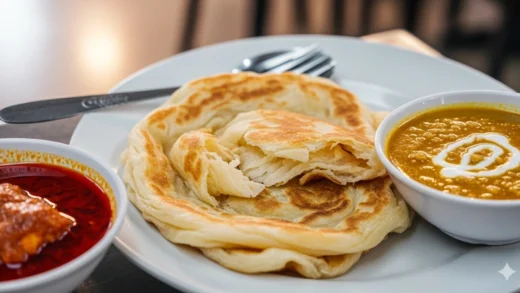Masjid Jamek Sultan Ibrahim Muar – A Timeless Symbol of Faith and Architecture

Masjid Jamek Sultan Ibrahim, also known as Masjid Jamek Muar, is one of Johor’s most historically significant mosques, standing gracefully along the Muar River in the town of Muar, Johor, Malaysia. Renowned for its Victorian-inspired architecture blended with Malay-Islamic influences, this mosque is not only a house of worship but also a stunning architectural masterpiece that represents Johor’s cultural and religious heritage.
History of Masjid Jamek Sultan Ibrahim
The story of Masjid Jamek Sultan Ibrahim dates back to 21 Rejab 1343H (15 February 1925), when its construction first began. Designed by Sulaiman bin Haji Alias, a talented Johorean painter, the mosque was completed in 1930 after five years of dedicated craftsmanship. The construction costs were shared between the Johor government and public donations, demonstrating the unity and devotion of the local Muslim community.
Originally named Maharani Mosque Muar, it was officially inaugurated by HRH Tengku Ismail Tengku Mahkota Johor on 28 February 1930. In 1984, the mosque was renamed Masjid Jamek Sultan Ibrahim to mark the 100th anniversary of Muar town, celebrating a century of history, faith, and progress.
Architectural Brilliance and Design
Masjid Jamek Sultan Ibrahim is a remarkable fusion of Western neoclassical design and local Malay architectural principles. The mosque is square-shaped, featuring a five-ridged roof (bumbung perabung lima) — a traditional Johor design known for its practicality and aesthetics.
Distinctive Features:
- 🕌 Victorian Influence: The mosque’s design carries strong Victorian elements, evident in its symmetrical structure, ornate columns, and classical proportions.
- 🪷 Local Inspiration: The fascia boards are carved with motifs resembling bamboo shoots, adding a touch of local artistry to the exterior.
- 🌙 Islamic Symbolism: The moon and star motifs on the minaret and columns reflect traditional Islamic design elements used during that era.
- 🏛️ Columns and Arches: Both Ionic and Doric columns were used, with minor modifications to suit Islamic architecture. The arches enhance the interior’s spaciousness and provide excellent airflow.
- 🪟 Windows: A mix of shutter and louvered windows combines neoclassical aesthetics with tropical practicality, allowing natural light and ventilation.
The main dome, shaped like an onion or spinning top, is influenced by the architectural style of Middle Eastern and Indian mosques. Meanwhile, the hip roof with a 30-degree slope allows rainwater to drain efficiently, an adaptation ideal for Malaysia’s tropical climate.
Interior Design and Prayer Facilities
Inside the mosque, the main prayer hall can accommodate up to 2,000 worshippers. The space for female worshippers is located towards the rear and left side of the hall, separated by curtains for privacy.
Notable interior highlights include:
- Intricately carved doors with floral and geometric motifs, including the moon and star symbols.
- A beautifully designed mihrab adorned with a dome.
- A six-step minbar constructed in France, placed on a 1.2-metre-high platform covered with carpets and bordered by an iron railing.
- A bench for the Imam or khatib and a storage area located beneath the minbar, showcasing thoughtful design and functionality.
Every detail of the mosque’s interior echoes craftsmanship, devotion, and artistry, reflecting the care and pride of the Johor Muslim community.
Cultural and Religious Importance
Beyond its architectural beauty, Masjid Jamek Sultan Ibrahim serves as a vital center for religious and community life in Muar. It continues to host:
- Daily and Friday prayers
- Islamic classes and sermons
- Festive events such as Eid prayers and Quran recitations
The mosque remains a living symbol of faith, harmony, and unity — standing as a bridge between Johor’s historical past and its vibrant present.
Visitor Information
📍 Location: Masjid Jamek Sultan Ibrahim, Jalan Petri, Taman Sri Tanjung, Muar, Johor, Malaysia
📅 Completed: 1930
🕋 Capacity: Approximately 2,000 worshippers
🚗 Getting There: The mosque is conveniently located near the Sultan of Johor’s Palace, along Jalan Petri, overlooking the scenic Muar River.
🕰️ Best Time to Visit: Late afternoon or sunset, when the mosque’s silhouette beautifully reflects on the river.
🎟️ Admission: Free entry; open to visitors outside of prayer times.
🙏 Dress Code: Modest attire is required; women should wear head coverings when entering the prayer area.
Conclusion
Masjid Jamek Sultan Ibrahim, Muar, stands as a magnificent blend of Islamic spirituality and timeless architecture. From its intricate Victorian columns to its traditional Johorean rooflines, every corner of this mosque reflects devotion, artistry, and historical significance. Whether you visit for prayer, photography, or cultural exploration, this mosque offers a truly enriching experience — a must-see landmark that continues to define the heart of Muar’s Islamic heritage.
FAQs about Masjid Jamek Sultan Ibrahim
1. Where is Masjid Jamek Sultan Ibrahim located?
The mosque is located at Jalan Petri, Taman Sri Tanjung, Muar, Johor, Malaysia, by the banks of the Muar River.
2. What is the capacity of the mosque?
The mosque can accommodate around 2,000 worshippers at a time.
3. What makes the mosque architecturally unique?
Its blend of Victorian, neoclassical, and traditional Malay-Islamic elements makes it one of the most distinctive mosques in Johor.
4. When was Masjid Jamek Sultan Ibrahim built?
Construction began in 1925 and was completed in 1930.
5. Can non-Muslims visit the mosque?
Yes, visitors are welcome outside of prayer times. Modest clothing and respectful behavior are required.





Comments are closed.